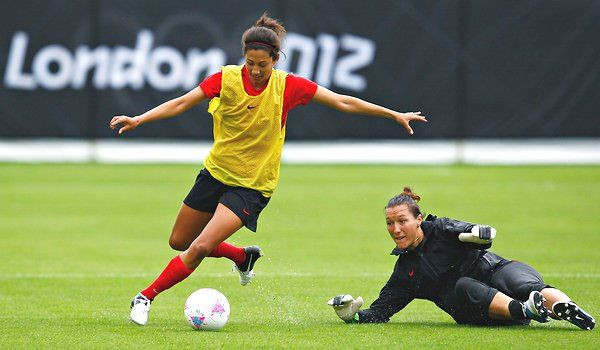Middle School Female Soccer Players Suffer More Concussions Than College Athletes; Worse, They Play Through Their Symptoms

While professional athletes in the NFL get all of the attention, research shows that the number of concussions among young female soccer players is through the roof, and the severity of these injuries is lost on players. A study out of the University of Washington's Department of Orthopedics and Sports Medicine in Seattle found that female soccer players under the age of 14 are suffering an alarming amount of concussions and still competing despite persistent symptoms.
Researchers from UW isolated two causes of a traumatic brain injury among soccer players: running into another player and redirecting the ball with their head, also known as heading the ball. Past studies have shown that half of all concussions reported by soccer players were the result of a collision with another player and around 30 percent are caused by heading the ball. These studies also show that heading the ball may be particularly dangerous for middle school athletes due to neck and brain development.
“Unlike a sprained ankle, concussion symptoms like a headache or dizziness often don’t physically prevent an athlete from continuing play, even though they’re putting themselves at risk by doing so,” lead researcher of the study and professor of orthopedics and sports medicine at UW, Dr. John O’Kane, said in a statement. “It may be beneficial to teach proper heading techniques to younger players, and there may be situations where those players shouldn’t head the ball.”
O’Kane and his colleagues from the university contacted 351 female athletes between the ages of 11 and 14 from 33 youth soccer teams around the Puget Sound area of Washington. From March 2008 to May 2012, participants were asked to send the research team weekly emails reporting any blows to the head or concussion symptoms such as headaches, dizziness, trouble concentrating, and in rare cases, loss of consciousness.
After combing through concussion research performed on high school and college-aged athletes, researchers found the young female soccer players in their study reported a higher concussion rate. What’s worse is that the majority of girls who sustained a concussion continued to play throughout any symptoms they may have been experiencing, and half of them neglected to seek medical attention following their blow to the head.
“Young athletes who get a concussion tend to underreport or minimize it because they don’t want to be taken out of play,” said Dr. Melissa Schiff, professor of epidemiology at UW. “Unless they tell their coach about it, coaches often aren’t aware of what happened. We need more education for children, as well as parents and coaches, about what a concussion is and what the consequences can be if it isn’t taken seriously.”
Athletes who attempt to play through concussive symptoms run the risk of suffering another blow to the head, which can result in second-impact syndrome. Considered rare, but not unheard of, second-impact syndrome tends to occur after a player sustains two major traumatic brain injuries within weeks of each other. This condition usually impacts athletes under the age of 20 and has the potential to turn deadly. O’Kane and Schiff have asked coaches and parents to be alert for concussive symptoms and to prevent the athletes from reentering the field of play after they're hit.
Source: Spieker A, Levy M, Neradilek M, Polissar N, Schiff M, O’Kane J. Concussion Among Female Middle-School Soccer Players. JAMA Pediatrics. 2014.



























